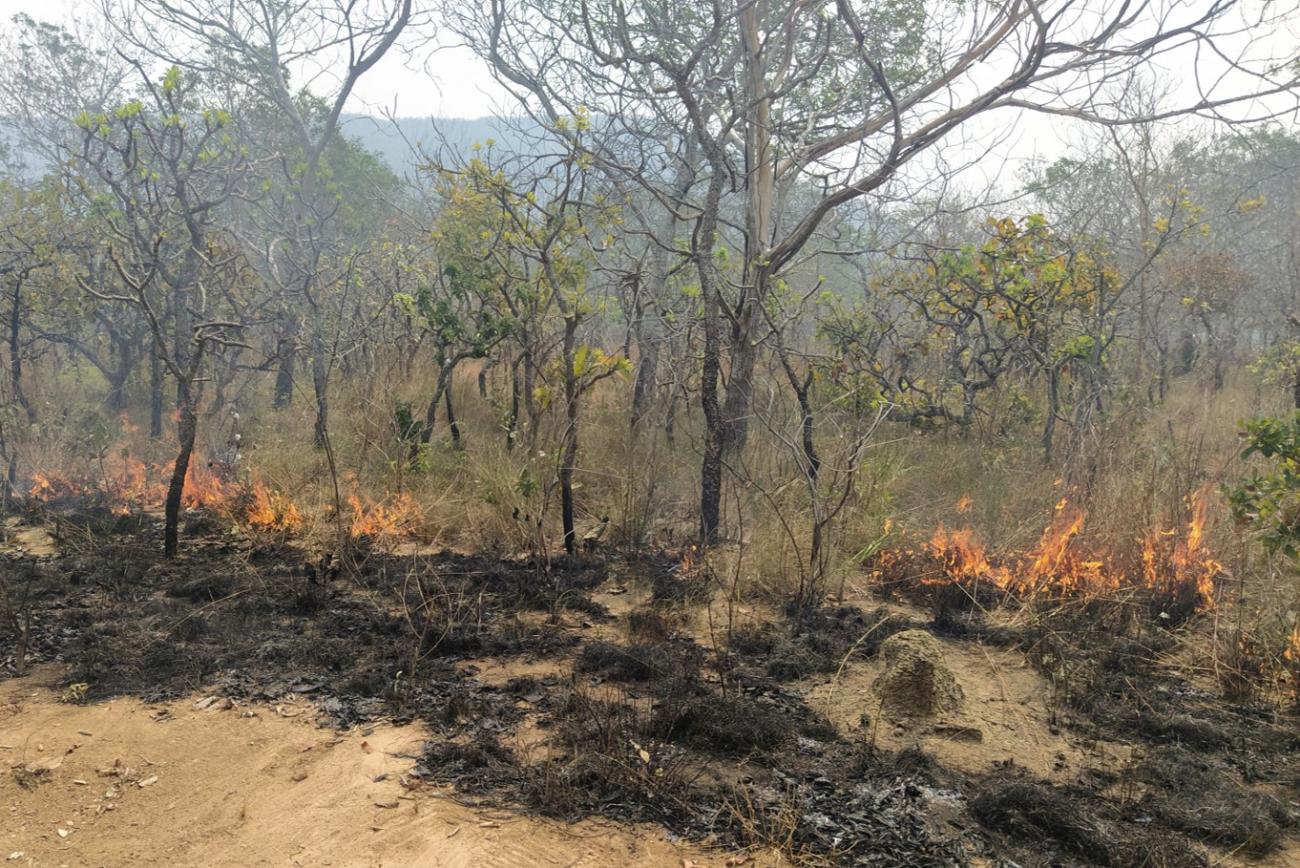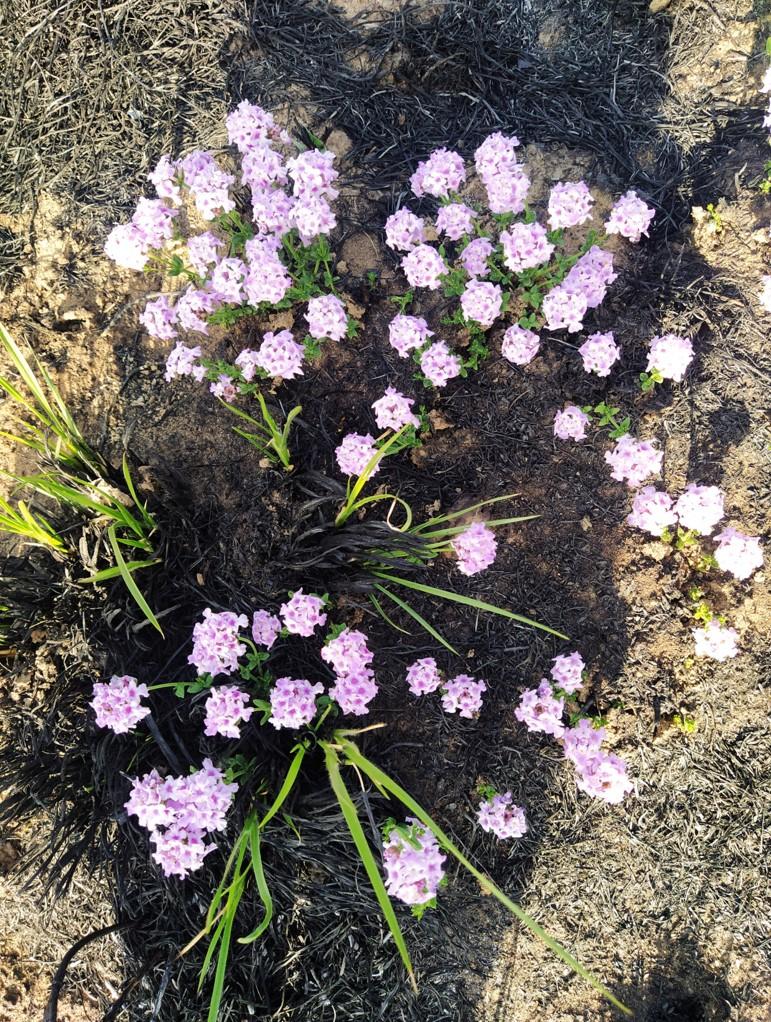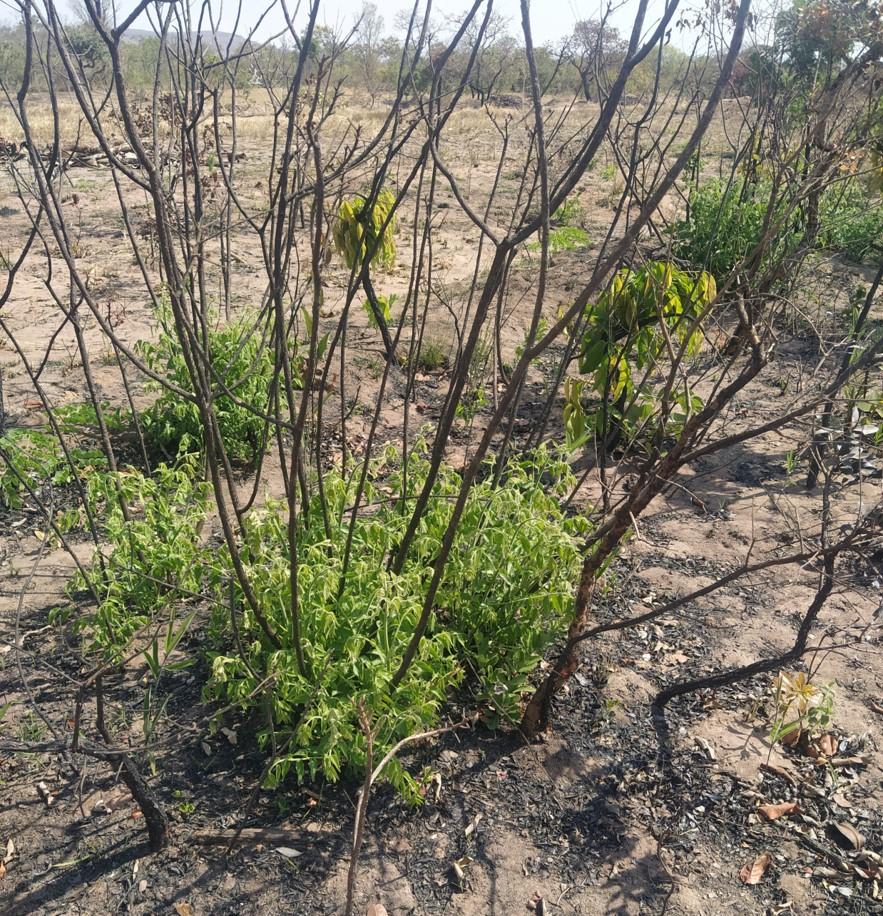In her first published paper, Carlota Segura Garcia, a DPhil student at the Environmental Change Institute (ECI), studies the surprising effects of both humans and climate change in the subtropical savannas of Brazil.
Her paper, “Human land occupation regulates the effect of the climate on the burned area of the Brazilian Cerrado”, has been published in the Nature portfolio journal Communications Earth & Environment.
Here Carlota explains their findings and the implications for the conservation of these savannas.
Tropical savannas and grasslands are fire-dependent ecosystems, meaning their vegetation has coevolved with fire and is adapted to it. As such, these ecosystems have historical fire regimes that contribute to shaping their characteristic vegetation and enhancing their biodiversity. In this paper, we address the question of how the two major drivers of fire, humans and the climate, have been pushing savannas’ burned area patterns in opposite directions over the past few decades. That is, while climate change is setting the stage for larger burned areas, actually burned area has been decreasing in general over the past few decades in savannas globally due to the effect of modern human expansion – even if this appears counter-intuitive.

In our research, we focused on the Brazilian Cerrado, the largest tropical savanna and a global biodiversity hotspot, where we observe both these increasing and decreasing trends in burned area in different regions. In this study, we quantify how these two drivers interact (we measure their combined effects), demonstrating strong controls on fire in human-dominated landscapes, where the effects of the climate are overridden by human land uses. That is, we do not see the expected relation of hotter and drier conditions causing larger burned areas in areas with more human activity. It is only in those more intact areas of the Cerrado where we observe the expected effect of the climate – indicating that the larger remaining tracts of the Cerrado are vulnerable to climate change. We clearly demonstrate this non-linear interaction, which is the main finding of this paper, helping to resolve this puzzle of opposite trends in savannas’ burned area.
The Cerrado is the second ecoregion of Brazil in size, only after the Amazon rainforest – albeit much more unknown. It is a vast ecoregion formed by a mosaic of grasslands, shrublands and savannas scattered with small forest patches, and is home to more than 12,000 species of plants, many of which are only found in this region. In these ecosystems, fire plays a fundamental role creating open areas in which many species thrive. For example, fire stimulates intense flowering and germination in some plant species, and others are able to survive fire and recover their leaves quickly by resprouting.
Despite its ecological importance, the Cerrado has been largely overlooked. Starting with development policies in the 60s and 70s, over the past five decades agriculture has rapidly expanded converting more than 50% of the Cerrado to pastures and croplands, often with higher deforestation rates than in the Amazon. Such widespread agricultural expansion has brought about, first and foremost, loss of native vegetation and natural habitats, but also changes to fire activity.

Our recent study shows how, since 1985, large-scale agricultural expansion over the Cerrado native vegetation has led to reduced burned area. Importantly, we find that in these human-dominated landscapes, the expected effects of the climate on burned area are hindered, suggesting strong human controls on Cerrado’s fire activity.
Although these findings might come across as counterintuitive, it has long been suggested that the widespread decrease in savannas’ burned area worldwide is a consequence of modern human expansion. Land conversion brings about landscape fragmentation, which creates discontinuities in the vegetation (the fire’s fuel) thus limiting fire spread. In addition, for a long time, misconceptions about the ecology of savannas and grasslands, along with the catastrophic introduction of fire in iconic fire-sensitive ecosystems like the Amazon rainforest, gave rise to the creation of Brazil-wide zero-fire policies. Such policies were extremely necessary and positive in ecosystems like the Amazon, where most fires are linked to deforestation. But these same policies had really negative impacts on the Cerrado leading to dramatic losses of biodiversity and its characteristic mosaic. In turn, these structural vegetation changes lead to fuel accumulation and increased risk of larger and more intense fires.
On the other hand, our research also shows how climate change is affecting those areas of the Cerrado with the largest native vegetation remnants: in the regions that have remained more intact, we observe the expected effects of the climate – i.e. dryer and hotter conditions leading to larger burned areas – as well as increasing burned area trends since 1985. Hence, the last remaining tracts of continuous Cerrado vegetation are suffering the effects of climate change.

All in all, our research portrays the scale and depth of the human footprint on the Cerrado through the altered patterns of burned area, be it directly through land conversion or indirectly though anthropic climate change. There is an urgent need to halt the loss of this wonderful ecoregion by expanding the area of Cerrado under protection. But it is also paramount to develop and enforce policies and fire management practices tailored to the ecological characteristics of the Cerrado and suitable to the new climatic context. In this sense, the recent adoption of the bill on a national policy on integrated fire management by the Brazilian senate is a hopeful achievement towards the conservation of the Cerrado.
Carlota Segura Garcia is in her fourth year of her DPhil at the ECI. She wrote the paper under the supervision of Dr Imma Oliveras Menor, a Senior Researcher at the ECI, and in collaboration with Dr David Bauman, former postdoc in ECI and currently a research scientist at the French National Research Institute for Sustainable Development (IRD), and Vera Arruda and Dr Ane Alencar, from the Amazon Environmental Research Institute (IPAM) in Brazil.
Read the full paper in Nature: Human land occupation regulates the effect of the climate on the burned area of the Brazilian Cerrado.

